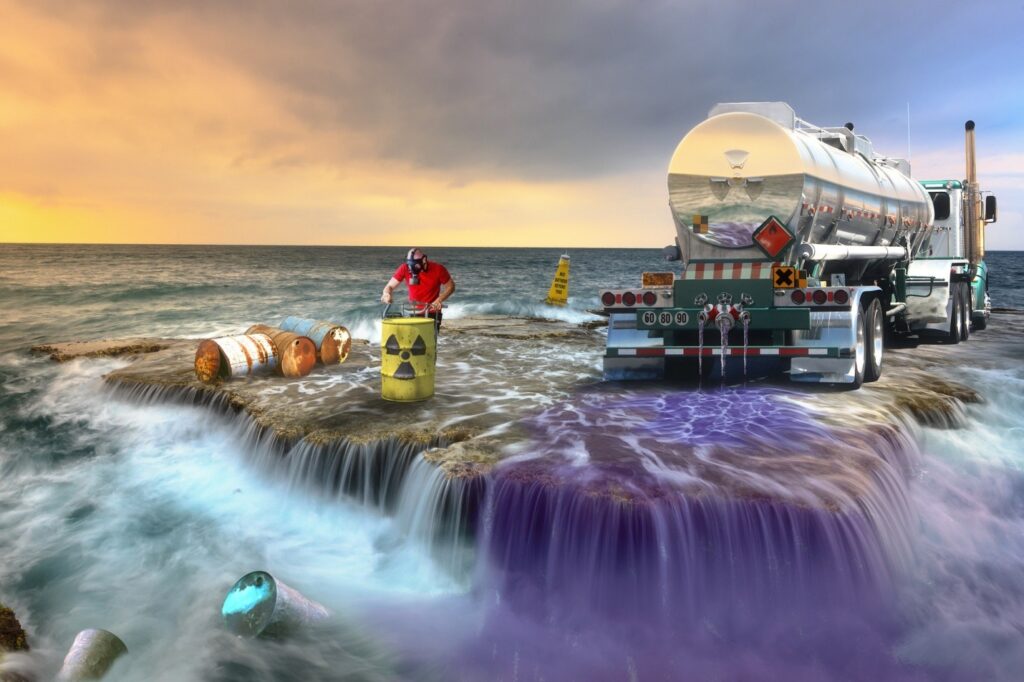Some Of Reclaim Waste
Some Of Reclaim Waste
Blog Article
The smart Trick of Reclaim Waste That Nobody is Discussing
Table of ContentsA Biased View of Reclaim WasteReclaim Waste Things To Know Before You Get ThisReclaim Waste Can Be Fun For AnyoneReclaim Waste Can Be Fun For EveryoneReclaim Waste Fundamentals Explained
Explore the kinds, incidents, and kinds of fluid waste. Domestic sewage waste describes the waste and products from a property septic container. This sort of waste is created by human beings in homes, colleges, and other buildings. This only consists of septic systems that have a drainpipe field. The correct administration and disposal of residential sewer waste require fluid waste to be moved to a sewage therapy plant where the correct techniques and tools are put on detoxify and deal with waste.
Commercial waste frequently consists of potential hazards, such as flammable products or a mix of liquid and strong waste items, and needs an advanced and in-depth disposal process. The disposal of commercial waste commonly entails the filtration of waste prior to transport to make sure secure and correct disposal. Hazardous waste is created from byproducts and runoff of commercial processes and manufacturing.
This sort of waste can not make use of the exact same sewage administration transport or processes as septic or commercial fluids. The commercial waste administration process requires the inspection and screening of liquid waste before it undertakes the disposal procedure (liquid waste disposal). Overflow waste is the fluid waste that comes from overflow and excess stormwater in very booming areas or cities
Drainage waste can trigger contamination and flooding if not dealt with properly. Making certain correct waste management can stop catastrophes and lower ecological harm.
The Best Guide To Reclaim Waste
Call PROS Services today to find out about our waste management and disposal solutions and the proper means to take care of the liquid waste you produce.
(https://experiment.com/users/reclaimwaste1)Do you recognize what occurs to your water when you end, flush the toilet or drain the washing equipment? No? Well, it's worth recognizing. This so-called 'wastewater' is not only a crucial resource but, after therapy, will certainly be released to our land, waterways or the ocean. Utilized water from toilets, showers, baths, kitchen sinks, washings and industrial processes is referred to as wastewater.

water made use of to cool machinery or tidy plant and devices). Stormwater, a form of wastewater, is overflow that moves from agricultural and metropolitan areas such as roof coverings, parks, gardens, roads, paths and gutters right into stormwater drains pipes, after rainfall. Stormwater streams without treatment straight to neighborhood creeks or rivers, eventually getting to the ocean.
Get This Report on Reclaim Waste
In Queensland, a lot of wastewater is dealt with at sewage treatment plants. Wastewater is transported from domestic or industrial websites through a system of drains and pump stations, understood as sewerage reticulation, to a sewer therapy plant.
The Department of Natural Resources advises local federal governments concerning managing, operating and keeping sewage systems and therapy plants. In unsewered areas, neighborhood federal governments may need homeowners to mount individual or house sewage therapy systems to deal with domestic wastewater from commodes, kitchens, bathrooms and laundries. The Department of Natural Resources authorises the usage of household systems when they are verified to be efficient.
Most stormwater receives no therapy. In some new class, treatment of some stormwater to remove clutter, sand and gravel has actually started utilizing gross toxin catches. Wastewater treatment takes place in 4 stages: Gets rid of solid matter. Bigger solids, such as plastics and other items incorrectly discharged to sewers, are eliminated when wastewater is travelled through screens.
Makes use of tiny living microorganisms understands as micro-organisms to damage down and get rid of remaining dissolved wastes and fine particles. Micro-organisms and wastes are incorporated in the sludge.
The Reclaim Waste Statements
Nutrient removal is not available at all sewer therapy plants due to the fact that it requires pricey specialist equipment. Clear fluid effluent created after therapy may still include disease-causing micro-organisms - liquid waste removal.

This usually indicates wastewater needs to be dealt with or pollutants eliminated prior to it can be released to waterways. The majority of wastewater streams right into the sewage system. Under the Act, regional governments administer approvals and licences for ecologically pertinent activities (ERAs) involving wastewater releases that might have a regional influence. The division administers authorizations and licences to Periods involving wastewater releases that may have a regional or statewide impact.
Not known Details About Reclaim Waste
Or else, examples are considered laboratory analysis. Frequently many examinations are needed to develop the levels of each of the different contaminants such as oils, heavy steels and pesticides in water. Surveillance supplies factual info regarding water quality and can verify that permit problems are being met. The information gotten with monitoring gives the basis for making water top quality decisions.
Report this page